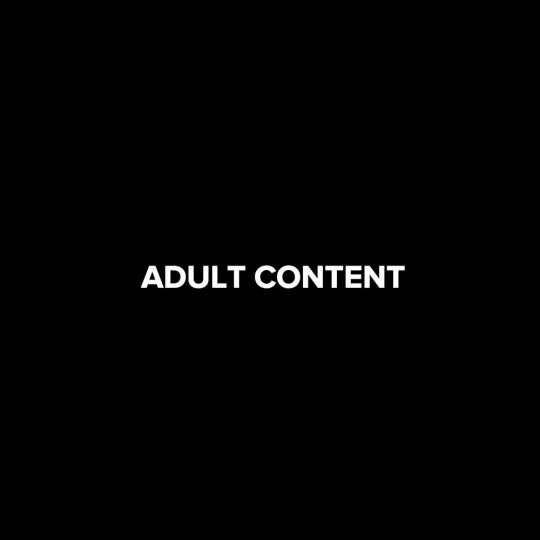#robert feustel
Text


the cultural heritage of mankind
As long as humans have populated this planet, drugs of various kinds have been used. Cultural history bears witness to this in many places: Mead and beer, hemp and opium, peyote and mescaline, tobacco, myrrh, frankincense, coffee, tea, betel, khat, herb or coca leaves - to name but a few - have fascinated people ever since they have been attached to some concept of pleasure. Sometimes drugs are a sacred medium of religious awakening, sometimes a means of a carnivalesque revaluation of all values. Sometimes they provide a collective ecstatic sense of purpose, sometimes they serve to make the hardships of everyday life more bearable: substances that do more than satisfy hunger and dispel thirst are firmly embedded in the cultural heritage of mankind.
Today, however, this diversity of means and motives for consumption is often minimised and instead a link between drug use and danger is suggested. The political problematisation of psychotropic substances began in the early modern period: at the beginning of the 17th century, the Ottoman Sultan Murad IV found it intolerable that tobacco and coffee houses had not only become places of consumption, but also centres of public discussion and thus places of criticism and opposition. He therefore had all tobacco houses torn down in 1633 and made smoking tobacco punishable by death. He used modern methods in the manhunt, such as undercover investigations and bogus purchases. The assets of those executed went to the sultan. Obviously, it was less about the drug itself; rather, the smoking ban fulfilled several useful functions: The criminalisation of a behaviour that was widespread on a mass scale and a sanction as part of - or under the guise of - drug control.
Until the 19th century, however, bans on drinking or smoking were rare. Since then, however, drugs and danger have become ever more closely linked, for example by the idea that all drugs inevitably lead to addiction and thus to ruin. Whenever there is talk of drugs or even "narcotics", the danger does not seem far away. The scientifically untenable but long-lasting talk of gateway drugs is proof of this - in fact, there is no reliable empirical evidence to show that the use of one drug often leads to another and thus deeper into the drug problem. Anyone who argues in this way has the slippery slope in mind, the fall that - for all those who have started - can only be avoided with great effort or not at all. Drug education in schools may have taken new, sensible paths at times. However, the actual and urgent reason for its necessity usually remains central: the danger.
However, the history of drug use is diverse and its widespread practices are only mediated, sequential or partially related to addiction and social decline. In addition, whenever people fall out of the social order, drugs were at worst a catalyst, but rarely or never the actual cause. The reluctant reference to drugs as the cause of social imbalances therefore has more the character of a handy and long-practised diversionary manoeuvre: those who hold drugs responsible do not have to talk about structural social imbalances.
It may therefore be time to turn our gaze round and look at the many and wide-ranging motives for drug use. After all, the matter of drugs is a kind of never-ending story, despite all the crusades and horrendous efforts in the so-called war on drugs. The following lines bring together - without claiming to be exhaustive, of course - a number of different reasons why people take or have taken drugs. In the process, a kaleidoscope of different episodes unfolds, the collection of which alone could illustrate how abbreviated the direct link between drugs, addiction and danger is in its contemporary form. Viewed from this perspective, i.e. detached from the overlapping perception of the problem, a different connection or at least an initial suspicion may emerge: which drugs are fashionable and how states and societies deal with them could be an expression of the respective social conditions.
Of course, this is not to say that drugs cannot tear chasms, that certain patterns of consumption sometimes lead to habits and damage health in the medium to long term. However, this is only one way among many, only one possible pattern, which also has to do with the constant social and economic marginalisation and political repression of youth cultures. The drug is only one factor. However, the almost exclusive focus on the practice of addiction and the social figure of the junkie has brought the whole subject of drugs and intoxication into disrepute and led to a sometimes bizarre practice of prohibition.
For the good!
The illustrious journey through the thicket of different reasons for drug use has countless possible beginnings and stops. The following passages of intoxicated transgression are not representative of anything, they merely show that different interpretations are possible. An arbitrary but interesting starting point is provided by a circular from the Faculty of Theology in Paris from 1444, which from today's perspective provides an irritating motivation for occasional but copious drinking. It states that "folly" is man's innate "second nature" and that "wine barrels burst if you don't open the lid from time to time and let air in. We, human beings, are poorly made wine barrels that burst from the wine of wisdom if it is left in uninterrupted fermentation of devotion and the fear of God. Therefore, on certain days we allow the folly (foolishness) in us to return to worship with all the greater fervour afterwards. "To resolve the footnote[2]
The regular drinking bouts were therefore doubly necessary: On the one hand, they were in keeping with human nature and, on the other, they were essential in order to live in a godly manner and pursue wisdom. The drunken feast, which thwarted all contemplation and fear of God, was thus part of the religious order. The culturally significant tradition of the festival, i.e. a "time between the times", has its last offshoots in today's carnival. However, there is little to suggest that much remains of the radical nature of the revaluation, of the character of the substantial time-out.
Just over a century later, the court marshal Hans von Schweinichen, whose diary entries have survived, was probably similarly drunk, albeit for completely different reasons. He was also fond of the "Tears of God" (Lacrimae Christi). He was so drunk that he "slept for two nights and two days in a row that people thought I would die". However, this did not cause him to turn away from wine. Quite the opposite: "And since then I have learnt to drink wine and have continued to do so to such an extent that I might well say it would be impossible for anyone to drink me full. But whether it brings me bliss and health, I leave to his place."
Of course, we can only speculate about Schweinichen's motives. It hardly sounds like a necessity of nature, a ritualised festivity or even a condition for religious wisdom. Rather, a kind of sporting competition without deeper meaning dominates, as is still often the case today.
Without any harm
While von Schweinichen described a social structure that apparently demanded his adaptation to alcohol, similar processes have also been passed down with regard to health aspects. Zedler's Universal Lexicon, for example, a kind of 18th century storehouse of knowledge, revealed that "opium can be used in fairly large quantities without any harm and with great benefit". It is well known that opium users "cannot refrain from it", i.e. that they cannot stop using it and, according to modern diction, become addicted. However, this is not a problem, just the opposite: "For if one is accustomed to poisonous things for a long time, they do no harm to nature. "5 The purpose of consuming opium here is to develop a habit in order to henceforth be able to enjoy the medical and psychological benefits of the substance without harm. Modern addiction research is no doubt throwing up its hands in horror. However, from a medical point of view, it is also known that opiates, appropriately dosed and consumed cleanly, trigger what we today call addiction, but cause hardly any physiological or psychological damage, provided that the social life around them functions.
At this point, however, the boundary between medication and drug becomes blurred. Strictly speaking, this boundary is only outlined either way on the basis of different consumption motives. Almost all drugs were or are also medicines - so it depends on the area of use and the reason for taking them. Opiates, for example, which include heroin, have been important substances in medicine for a very long time and still are today.
A letter to the editor that an elderly woman sent to the specialist journal "The Chemist and Druggist" in 1888 also shows how historically different the motives, practices and their categorisation as a (drug) problem are. It reads: "I have used morphine regularly for 30 years. (...) This medicine, so injurious in most cases, has done no harm whatever to my vitality. Nor has it in any degree reduced my vigour, which is very similar to that of young women, although I am now 67 years old. My zest for life is excellent, I am neither as emaciated nor as emaciated as most others who have undergone this treatment. (...) The only problem that probably stems from this medicine is that I am constantly putting on body fat. I would be extremely grateful if one of your experts would be so kind as to inform me whether my increase in adipose tissue is a natural consequence of morphine consumption. "
For medical reasons, the author of these lines had fallen into an opium habit that today would be labelled a severe addiction. At the same time, there are indications that the image of the typical addict ("neither as emaciated nor emaciated as most others") was (and is) more of a media spectre than a real experience or observation. What the woman is referring to is ultimately unclear. But the debate on addiction that emerged at the end of the 19th century was fuelled by stereotypes and exaggerated figures that correspond pretty much exactly to the typical image of the woman as a junkie. And finally, if there is an undisputed connection between the effects of opiates, then it is that they curb the appetite and can hardly be responsible for obese tendencies.
The letter to the editor shows two things quite vividly: on the one hand, it is recognisable how a modern addiction narrative creeps in and begins to re-evaluate things. The author was still very much a part of Victorian England, which had few reservations about opium. At the same time, however, she was already aware of the new era of rampant problematisation of drugs - if only to distance herself from it. On the other hand, the source also shows that debates on addiction, with their typical generalisation and focus on the compulsive nature of consumption, are to a certain extent blind to the motives, or at least less receptive to them. The same consumption practice, i.e. regular and high doses, can have many different reasons.
Between enlightenment and rebellion
A different spectrum of motives for drug use unfolds around attempts to help enlightenment with psychotropic substances. While the medieval circulars emphasised that wine-fuelled folly only provided the balance to strive for wisdom at all other times, the direct link between drugs and knowledge has a long history. The ancient Greek symposion (Latin: symposium) stands for social drinking in company, resulting in profound and perhaps philosophical conversations that lead to knowledge. The term has survived in the world of science, even if today's editions tend to shine with sobriety. The fact that there are always "symposia" on alcohol addiction is probably an unintentional punchline.
Newer versions of the link between drug and cognition focus less on social situations and more on individual experiences. To a large extent, we have the Romantic conquest of drugs in the first half of the 19th century to thank for this. Thomas De Quincey, for example - one of the first modern writers to deal with the insights and abysses of the effects of intoxication in literature - spoke in the mid-19th century of memory as a "palimpsest", i.e. a rewritable parchment that still bears all the older traces. Opium exposes these traces and therefore allows deep, otherwise hidden memories: "Life had spread a shroud of oblivion over every detail of experience. And now, on a silent command, on a rocket signal that our brain releases, this shroud is abruptly removed and the whole theatre lies bare to its depths before our eyes. This was the greatest mystery. And it is a mystery that excludes doubt - for to the martyrs of opium it repeats itself, it repeats itself ten thousand times in intoxication.
Since then, there have been many variations of profound, comprehensive, absolute, paradisiacal and constantly world-shaking insights in intoxication. The writer Charles Baudelaire stepped completely out of a purely subjective position and became a pipe smoker, only to subsequently become acquainted with the false paradise. His colleague Fitz Hugh Ludlow could "look into himself and, thanks to this appalling ability, perceive very vividly and clearly all the processes of life that take place unconsciously in the normal state". The philosopher William James did not experience his childhood as De Quincey did, but he experienced the truth quite directly: "For me, as for every other person I have heard of, the fundamental of the experience [of intoxication] consists in the tremendously thrilling sensation of a haunting metaphysical illumination." On nitrous oxide, "all the logical relations of being" were revealed.
The journey continues via the philosopher of life Ludwig Klages, who, intoxicated, experiences eternity in an instant, to the philosopher Walter Benjamin, who turns the tables differently - and more cleverly than the others - and recognises the emptiness or absence of truth in intoxication, via the writer Carlos Castaneda and on to the self-proclaimed leader of the psychedelic movement of the 1960s, Timothy Leary, who wanted to give LSD to as many people as possible. The motive for drug use is always the realisation, the hope of unravelling the mystery of life, the world or even the universe once and for all. Cultural history is full of attempts to enter into a Faustian pact with the devil in order to finally understand.
Sometimes realisation should be followed by action. Some who had seen or believed they had seen "the truth" wanted to use it in a revolutionary way and kiss a different society awake with the help of fabrics. Leary, for example, was of the opinion that the cybernetic-biological evidence, i.e. the unmediated truth of DNA, which LSD supposedly inevitably and undeniably calls to consciousness, must inevitably lead to people shedding the ridiculous mask called subject and inevitably overcoming capitalism. "Turn on, tune in, drop out" was the corresponding motto of the psychedelic revolution - which, however, failed to materialise. And the poet Allen Ginsberg, a Beat - i.e. hipster - of the first hour, declared to his Beat colleague Jack Kerouac on the phone: "I'm high and naked, and I'm the king of the universe", in order to then want to instigate the psychedelic revolution.
The drunken rebellion was not always preceded by total realisation. Sometimes drug use was and is a more or less rebellious rejection of the norms of society, of the status quo, combined with an attempt to expand the scope of freedom, even without a deeper layer. The writer William S. Burroughs and the aforementioned Beats, for example, used drugs as a provocation, as an antithesis and a means of breaking out of the puritanical straitjacket of the homophobic McCarthy era of the 1950s. And after the intoxicated euphoria of the 1960s, the motif of enlightenment faded into the background anyway. Punk became the new antithesis: a rebellion without revolution - but with drugs. Drug consumption can therefore also be motivated simply by the desire to set oneself apart from one's parents' generation and to emphasise one's own "No!" to the boredom of bourgeois life with a thick bag. Even the rave and techno movement of the 1990s had such elements of rebellion, if only because older generations didn't want to understand what this "endlessly booming music" was all about. Once again, a youth culture was spreading that wanted to cheat its parents and be different, including drug use.
Optimise yourselves!
Intoxicated realisations were booming - at present they have tended to retreat into scattered esoteric circles. And since the "new spirit of capitalism" has made rebellion the mode of accumulation, i.e. the creative class the driving force of capital, it is no longer so easy to drive parents up the wall with drug consumption. Instead, a whole spectrum of adapted consumption motives has become established; optimisation is the new trend.
In late modernity, a different place or rather a different, functional contour emerged for drug use, which nevertheless remained controversial. Since the 1990s, "avant-garde perspectives have been developing that deal with completely new types and dynamics of controlled pleasure production and functional enjoyment". In keeping with the neoliberal zeitgeist, in the context of which the individual and sometimes their intoxication became a resource, a pragmatic and purpose-orientated use of drugs shines through. As a result, consumption motives are also shifting. Drugs, which as alcohol, coffee, cigarettes or medicines are an everyday part of society, could - so the faint hope - be de-ideologised. This is primarily fuelled by the aforementioned "spirit of capitalism", which elevates flexibility and creativity to the highest economic good. The distinction between medicine and drug is becoming completely fragile, and the motives for consumption are becoming as diverse as they are customised with the new commodity form of the drug. In the foreseeable future, the flexibility of the norms will move drug consumption and intoxication out of the patterns of deviant behaviour and into a space of flexible normality. The flexible person has to learn new rules for dealing with themselves and the world and, not least, in dealing with their self-control: they only have to be careful to maintain a "reflexive distance".
Subject, substance, society
The multifaceted picture of motives or reasons for drug use presented here is truly incomplete. Other topics include Drugs for the purpose of martial disinhibition - such as Pervitin, a metamphetamine that was used en masse by Wehrmacht soldiers during the Second World War to reduce feelings of anxiety and increase performance - drugs to suppress socio-psychological baggage, drugs to speed up in order to keep up with the pace of the present and the beat, or drugs to combat the boredom of dull everyday life. On closer inspection, the different categories become blurred: Leisure and work, controlled consumption and addiction, hard and soft drugs or medication and drug. None of these pairs remains a real contradiction in the long term.
The triangle of subject, substance and society, with the help of which the Swiss historian Jakob Tanner attempts to capture the history of knowledge of the concept of addiction in the 20th century and free it from the clutches of medical self-certainty, also contributes to the dissolution. when it comes to the motives for drug consumption and its analysis. Subjective dispositions and constellations are always involved, as are the stimuli of the drug. Society always plays a decisive role, even if there is less talk of it at present, and on several levels: What is the legal status and moral connotation of drugs at what time? Are opiates regarded as a household remedy for free disposal or as the stuff of hell that inevitably leads to addiction and a crash? Or does drug use fall into the clutches of political aspirations or even movements? Is it labelled as rebellious, or does it have the reputation of holding irrefutable and earth-shattering truths? Is smoking weed a good way to start an adolescent row with the parents, or do the parents themselves like to grab a bag?
There is no doubt that motives are often mixed, and the reality of drug use makes it almost impossible to decipher things clearly. And often enough, users themselves don't know exactly why they take what. And yet it should have become clear that the link between drugs, danger and addiction does not stand up to historical scrutiny. The strong focus on the problem of drugs sometimes leaves the impression of a diversionary or evasive manoeuvre. From time to time, drugs did become dangerous to the general order, for example in the context of the counterculture of the 1960s. In each case, this led to a frenzy of lurid anti-drug propaganda, which pushed the dangers to the fore with all its might and had no inhibitions about spreading lies (for example regarding alleged chromosomal damage caused by LSD).
A kind of phenomenology of different motives and practices is therefore an important thing. Especially when the role of society in the triangle of subject and substance is taken into account. The whole subject area of drugs and drug use could ultimately serve as a kind of seismograph for different social conditions. According to a somewhat hackneyed saying, every society has the fashionable drug it deserves. This perspective could provide a whole panorama of interpretations. While the usual focus is on the influence of drugs on society (for example: "What does crystal meth do to people?"), it would be interesting to ask what influence society has on drugs, i.e. which drugs are used when, for what purpose and for what social or political reasons. The much-discussed opioid crisis in the USA might then appear to be an expression of a violently depressing time that is better tolerated with sedatives. Fast coke for top performance or weed for more creativity are then no longer the drugs of choice, but rather the painkilling opioid oxycodone or the anxiety-reducing benzodiazepine Xanax to endure the madness of late capitalism or at least the pains of transformation of a society in transition that can be felt everywhere.
Intoxicated by history
For thousands of years, humans have relied on the intoxicating effects of nature: a brief history of herbal drugs
Arno Frank
Prehistory: mushrooms in the desert
The history of plant-based drugs is almost as old as mankind. Their earliest depiction dates back to a time when even the Sahara was still a flourishing Garden of Eden and can be found in a sandstone mountain range in southern Algeria. There, prehistoric cave paintings show people with ritual headdresses dancing happily. They are holding mushrooms in their hands, from which dotted lines lead to the head - not only the oldest depiction of a drug ever, but also an artistic realisation of its effects. 10,000 years old and refer to the use of psilocybin-containing mushrooms in early advanced civilisations. The psilocyn or psilocybin they contain has a similar mind-expanding effect to LSD. It leads to a change in the state of consciousness, to waking dreams and visions, but can also cause mental disorders. Among the Aztecs, the mushrooms were known as "Teonanacatl", "flesh of the gods". The oldest surviving word for drug is also of divine origin, first written down in Sanskrit in the oldest religious texts of ancient India, the Vedas. It speaks of "soma" - at once god, plant and intoxicating juice. Scientists still puzzle over the composition of this juice to this day. It is assumed that the basis was the fly agaric.
Early times: liquid bread for the pharaoh
The mushroom went out of fashion when the first civilisations cultivated agriculture. As a result, they almost inevitably discovered alcohol, almost simultaneously in the Middle East and East Asia. The oldest recipe is Chinese, but there is also evidence of breweries in Mesopotamia and Sudan. In Egyptian mythology, it was Osiris who taught people how to brew. Although there wasn't much to teach. Barley mash, stored in a damp place, begins to ferment. The wages of the labourers on the pyramids included not only bread, but also beer. Because of its effects, beer quickly became the subject of both draconian prohibitions and festive rituals. Anyone caught drinking beer among the Sumerians could be drowned in their barrels, and on high Egyptian holidays, getting drunk together was a social event. Anyone conceived during these excesses was considered a lucky child. The Greeks were more inclined towards fermenting grapes and even had a god in Dionysus who was responsible for states of intoxication. But even in Athens, alcohol served higher purposes. In the "Symposium", people drank, but also practised philosophy with their loosened tongues.
The Middle Ages:
Good humour with the herb witchIn dark times, it was very useful to know what "an herb had grown against" - and where you could find it. Little helpers grew by the wayside, from belladonna to "fool's mushrooms" and datura. In the wrong hands, they could cause a lot of mischief. In skilful hands, the soothing substances were used for healing. A mixture of mandrake, henbane and poppy was commonly used as a "sleeping sponge" for anaesthesia. In the Middle Ages, a powerful drug was extracted from the scarified seed capsules of the poppy: opium. The juice had a healing effect, as Hildegard von Bingen noted: "And this is what you heal with." As a thickened paste with honey (called latwerge), the opium poppy was used for anaesthetic purposes and was often used under the suspicious eye of the church, which considered illness to be a punishment from God. Anyone who knew too much could quickly end up at the stake as a "herbal witch".
Early modern times: leaves for the conquerors
The leaves of the coca bush have always been chewed in South America. They helped against hunger, tiredness, cold and helped the blood to absorb oxygen. A property that also helped the coca bush to enjoy a flourishing career in the Andes. Coca was also drunk as tea and always chewed with the addition of lime or plant ash. When applied with saliva, it even had a pain-relieving effect and the arrival of the Spanish conquistadors was the first turning point. It is known that many of them not only took a liking to gold, silver and tobacco, but also conquered their new empires with coca leaves in their saddle and cheek pouches. The effects of the coca plant helped the exploiters in their plunder. As early as the 16th century, a royal accountant in Peru rejoiced: "The Indians in the mines can stay 36 hours a day without sleeping or eating." Later, the stimulant even made it into the original recipe for a world-famous US lemonade, and a second turning point was the successful isolation of cocaine from coca leaves in 1859. But that's another story and has little to do with the plant.
Today: Marijuana for the masses
Cannabis, also known as marijuana, grass, weed, pot or ganja, is something of a classic in the garden of speciality plants. Cannabis was used for medicinal or spiritual purposes in ancient China and India. Although hemp was cultivated in the West, the active ingredient - tetrahydrocannabinol, or THC for short - was not valued for a long time. In Christian tradition, it was considered exotic and dangerous. Crusaders feared the assassins of the Syrian Assassins, "hash machines", which translates as "hashish people" - the Assassins allegedly used the drug to make their followers compliant. Which is probably a legend. The consumption of weed makes most people listless. Cannabis first made a career in the West in Paris in the exclusive "club of hashish eaters". Artists and intellectuals from Victor Hugo to Charles Baudelaire and the painter Eugène Delacroix met to consume "hashish" processed into a paste with cinnamon, cloves, pistachios and butter. Their aim was to expand consciousness and heighten sensory impressions - all motives that still tempt people to smoke weed today.
Cannabis is banned in most countries, while in others a rethink is underway that is not only enabling the legalisation of cannabis (for example in the USA or Uruguay), but is also bringing the medicinal benefits of the plant into focus. THC-free CBD drops have been freely available in Germany for some time now. Their active ingredient, cannabidiol, is also relaxing - but not intoxicating.
#CC BY-NC-ND 3.0 DE#drogs#CC-BY-NC-ND-4.0-DE#Arno Frank#robert feustel#freedom of expression#human history#mod studio#reality#the cultural heritage of mankind#culture#politics#equality#freedom#headdog#artwork#Complete nonsense who can read has a clear advantage#alcohol#cocaína#weed#and on and on and on#read more
1 note
·
View note
Text
STS-400: The planned (if needed) rescue of STS-125

Unofficial crew patch *

On LC-39A STS-125 Atlantis (left) and on LC-39B is STS-400 Endeavour (right).
In the wake of the Columbia Tragedy, NASA prepared several contingency missions in the event a shuttle could not return safely. Most of the shuttle missions post STS-107, involved the construction/support of the International Space Station. If there were any instances where the shuttle was deemed unfit to return safely, the crew would stay on the ISS until a relief shuttle could be sent. However, STS-125 Atlantis was to service the Hubble Space Telescope and was not on the same orbital plane as the ISS. The Atlantis wouldn't have enough fuel to reach the station, so another Shuttle (Endeavour) was kept on standby on LC-39B. STS-400 would have been crewed by Christopher Ferguson, Eric A. Boe, Robert S. Kimbrough and Stephen G. Bowen.

On the first day, the crew of Atlantis would use the Canadarm to inspect the bottom of the shuttle for damage to the Thermal Protection System. Had there been any damage deemed unrepairable, the plan was to launch Endeavour 5 days later. Atlantis would be put into powered-down mode to conserve power and consumables.


Endeavour will have Altitude Control with Atlantis serving as a Micro-Meteoroid Orbiting Debris shield.
"On flight day two, Endeavour would have performed the rendezvous and grapple with Atlantis."



Crew locations during EVA-1
"On flight day three, the first EVA would have been performed. During the first EVA, Megan McArthur, Andrew Feustel and John Grunsfeld would have set up a tether between the airlocks. They would have also transferred a large size Extravehicular Mobility Unit (EMU) and, after McArthur had repressurized, transferred McArthur's EMU back to Atlantis. Afterwards they would have repressurized on Endeavour, ending flight day two activities."


Crew locations during EVA-2


Crew locations during EVA-3
"The final two EVA were planned for flight day three. During the first, Grunsfeld would have depressurized on Endeavour in order to assist Gregory Johnson and Michael Massimino in transferring an EMU to Atlantis. He and Johnson would then repressurize on Endeavour, and Massimino would have gone back to Atlantis. He, along with Scott Altman and Michael Good would have taken the rest of the equipment and themselves to Endeavour during the final EVA. They would have been standing by in case the RMS system should malfunction. The damaged orbiter would have been commanded by the ground to deorbit and go through landing procedures over the Pacific, with the impact area being north of Hawaii. On flight day five, Endeavour would have had a full heat shield inspection, and land on flight day eight."
Information from Wikipedia link

STS-400 Middeck Seating
The additional crew members on Endeavour would have been accommodated via additional seats installed on the middeck. The autopilot onboard Atlantis would be used to de-orbit the orbiter tail first, to destroy it over a region north of Hawaii, in the Pacific Ocean.

Another unofficial crew patch.

View from LC-39B of the launch of STS-125 Atlantis on May 11, 2009. This was the fifth and final Space Shuttle mission to the Hubble Space Telescope.
Fortunately, STS-400 was not needed and Endeavour was returned to the VAB from LC-39B for STS-127.
* "As a contingency mission, STS-400 was not given official support by NASA for the production of a crew patch or emblem. However this artwork was created for use by the mission team as an unofficial emblem by Mike Okuda [the same person who worked on Star Trek and most of the LCARS], who also illustrated the official patch of STS-125, the flight to be rescued by STS-400."
Date: September 9, 2008
source, source, source, source, source, source, source, source, source, source, source, source, source , source
#STS-400#STS-125#Space Shuttle Atlantis#Atlantis#OV-104#Space Shuttle#Space Shuttle Endeavour#Endeavour#OV-105#Orbiter#NASA#Space Shuttle Program#September#2008#rescue#my post
129 notes
·
View notes
Text
Handbuch der rauschdrogen pdf
HANDBUCH DER RAUSCHDROGEN PDF >> DOWNLOAD LINK
vk.cc/c7jKeU
HANDBUCH DER RAUSCHDROGEN PDF >> READ ONLINE
bit.do/fSmfG
Handbuch der. Rauschdrogen. Wolfgang Schmidbauer. Jürgen vom Scheidt nymphenburger Aspekte der Rauschdrogen - vier Rahmenartikel. gebrauchtes Buch – Schmidbauer, Wolfgang – Handbuch der Rauschdrogen / Wolfgang Schmidbauer ; Jürgen VomScheidt. Preis: 15,00 € * LESERDIENST: Buchbesprechungen. Wolfgang Schmidbauer, Jürgen vom Scheidt: Handbuch der Rauschdrogen. Dtsch Arztebl 1989; 86(21): A-1622 Handbuch der Rauschdrogen. Frankfurt am Main: Fischer, 2004. Deutsche Hauptstelle für Suchtfragen;. Raphael Gaßmann (Hrsg.) Cannabis.1 Eine Einleitung Robert Feustel, Henning Schmidt-Semisch und Ulrich Bröckling Teil I Kulturgeschichtliche Zugänge zu Drogen und Rausch Drogen in
https://wepiwalopux.tumblr.com/post/693648066427912192/tcm-2016-bedienungsanleitung-w724v, https://wepiwalopux.tumblr.com/post/693648066427912192/tcm-2016-bedienungsanleitung-w724v, https://fifekevom.tumblr.com/post/693648051048431616/sapor-teppichreiniger-bedienungsanleitung-huawei, https://fifekevom.tumblr.com/post/693648051048431616/sapor-teppichreiniger-bedienungsanleitung-huawei, https://wepiwalopux.tumblr.com/post/693648125884350464/siemens-tk-76-k-573-bedienungsanleitung-hd.
0 notes
Text
Behnken and Cassidy Conclude Ten Spacewalks Each
ISS - Expedition 63 Mission patch / EVA - Extra Vehicular Activities patch.
July 21, 2020
NASA astronauts Robert Behnken and Chris Cassidy concluded their spacewalk at 12:41 p.m. EDT, after five hours and 29 minutes. The two NASA astronauts completed a number of tasks designed to upgrade International Space Station systems.
They began by installing a protective storage unit that includes two Robotic External Leak Locator (RELL) units the Canadian Space Agency’s Dextre robot can use to detect leaks of ammonia, which is used to operate the station’s cooling system.
Image above: NASA spacewalkers (from left) Bob Behnken and Chris Cassidy set up the outside of the Tranquility module for the future installation of the NanoRacks airlock. Image Credit: NASA TV.
Behnken and Cassidy then removed two lifting fixtures at the base of station solar arrays on the near port truss, or backbone, of the station. The “H-fixtures” were used for ground processing of the solar arrays prior to their launch.
They then completed tasks to prepare the outside of the Tranquility module for the arrival later this year of the Nanoracks commercial airlock on a SpaceX cargo delivery mission. After its installation, the airlock will enable be used to deploy commercial and government-sponsored experiments into space.
They also routed ethernet cables and removed a lens filter cover from an external camera.
Down To Earth - The Overview Effect
Video above: In “Down to Earth - The Overview Effect” NASA astronauts discuss a shift in worldview from their time living and working in space. The phenomenon is described in space philosopher Frank White's book, The Overview Effect: Space Exploration and Human Evolution. Video Credits: NASA Johnson.
This was the 10th spacewalk for each astronaut, tying them with Michael Lopez-Alegria and Peggy Whitson as the only other U.S. astronauts to complete 10 spacewalks. Behnken has now spent a total of 61 hours and 10 minutes spacewalking, which makes him the U.S. astronaut with the third most total time spacewalking, behind Lopez-Alegria and Andrew Feustel, and the fourth most overall. Cassidy now has spent a total of 54 hours and 51 minutes spacewalking and is ninth on the worldwide list for total time spacewalking.
Space station crew members have conducted 231 spacewalks in support of assembly and maintenance of the orbiting laboratory. Spacewalkers have now spent a total of 60 days, 12 hours, and 3 minutes working outside the station.
Related article:
NASA’s 'Robot Hotel' Gets Its Occupants
https://orbiterchspacenews.blogspot.com/2020/07/nasas-robot-hotel-gets-its-occupants.html
Related links:
Expedition 63: https://www.nasa.gov/mission_pages/station/expeditions/expedition63/index.html
Commercial Crew Program: https://www.nasa.gov/exploration/commercial/crew/index.html
Robotic External Leak Locator (RELL): https://nexis.gsfc.nasa.gov/rell.html
Space Station Research and Technology: https://www.nasa.gov/mission_pages/station/research/overview.html
International Space Station (ISS): https://www.nasa.gov/mission_pages/station/main/index.html
Image (mentioned), Text, Credits: NASA/Mark Garcia.
Best regards, Orbiter.ch
Full article
10 notes
·
View notes
Text
MDR setzt Sendung ab – wg. eigener Ankündigungsformulierung
Tichy:Die Pippi-Langstrumpf-Debatte ist beim MDR angekommen. Klar, wer noch in der Taka-Tuka-Sprache eine Sendung anmoderiert, der muss mit einem ordentlichen Echo rechnen. Mit einem veritablen Shitstorm? Darf man heute noch "Neger" sagen? Warum Ist politische Korrektheit zur Kampfzone geworden? Darüber sprechen wir heute Abend (20 Uhr) mit @FraukePetry, @kerstinkoeditz, @ZDF-Mann Peter Hahne und Robert Feustel Der Beitrag MDR setzt Sendung ab – wg. eigener Ankündigungsformulierung erschien zuerst auf Tichys Einblick. http://dlvr.it/QPsC1K
1 note
·
View note
Text
Das Elend der immer gleichen Diskussion, "was man noch sagen darf"
Neuer Beitrag veröffentlicht bei https://melby.de/das-elend-der-immer-gleichen-diskussion-was-man-noch-sagen-darf/
Das Elend der immer gleichen Diskussion, "was man noch sagen darf"

Mein ganzes Leben lang führe ich mit ignoranten Menschen die immer gleichen Diskussionen. Vor mir haben das schon andere getan. Die Initiative Schwarze Menschen in Deutschland (ISD) engagiert sich sogar schon seit über 30 Jahren für die Belange von Schwarzen Menschen.
Aber der Mehrheitsdeutsche geht immer wieder auf Anfang zurück und fragt mit Vorliebe Seinesgleichen: Ja, was darf man denn heute überhaupt noch? So wie in dieser Woche wieder bei „Maischberger“. Ich bin es leid.
Der Autor
Ali Schwarzer hat Medien und Kommunikation studiert und kurz danach seinen Fernseher aus dem Fenster geworfen. Er bloggt seit mehreren Jahren über Rassismus, seit 2014 ist er Betreiber der Trollbar. Er heißt nicht wirklich Schwarzer, ist aber Schwarz und mag das Spiel mit Worten.
Das Adjektiv „Schwarz“ schreibt er groß, um auszudrücken, dass es sich um einen politischen Begriff und ein konstruiertes Zuordnungsmuster und nicht pauschal um eine ethnische Gruppe handelt.
So richtig kann ich nicht nachvollziehen, was da bei den öffentlich-rechtlichen Sendern los ist. Ich weiß zwar, dass deutsche Redaktionen in etwa so divers sind wie ein Sack Kartoffeln und Geschichten daher in der Regel aus einem sehr engen Blickwinkel betrachtet werden, es also an unterschiedlichen Perspektiven fehlt. Dass aber innerhalb kürzester Zeit gleich zwei Sender, nämlich der MDR und das Erste, Sendungen über „politische Korrektheit“ ankündigen, in denen es alles andere als politisch korrekt zugeht, kann ich mir eigentlich nur mit bösem Willen oder kindischem Trotz erklären.
Vor knapp drei Wochen wollte der Radiosender MDR Sachsen eine Diskussion zum Thema politische Korrektheit ausstrahlen. Neben der Landtagsabgeordneten der Linken, Kerstin Köditz, und dem Mitherausgeber des Wörterbuchs des besorgten Bürgers, Robert Feustel, sollten auch „ZDF-Mann“ und Angsthase Peter Hahne sowie Frauke Petry mitdiskutieren. Kann man machen. Oder man lässt es lieber gleich.
Der Radiosender ließ es am Ende tatsächlich, aber nicht, weil man in der Redaktion zur Vernunft gekommen sei, sondern weil der MDR bei Twitter mit einem deutlichen „Nein!!1“ (andere würden es „Shitstorm“ nennen) konfrontiert worden war, nachdem mit einem „zugespitzten Tweet“ für die Sendung geworben wurde: „Darf man heute noch ‚N.‘ sagen?“ N. war selbstverständlich ausgeschrieben.

Sandra Maischberger Screenshot: Das Erste
Die Redaktion von „Maischberger“ hatte nichts aus dem Debakel gelernt. Auch sie setzte eine Disussion an, wie diskriminierend Sprache sei. Schon der Titel schreit den Trotz hysterisch in die Runde: „Man wird ja wohl noch sagen dürfen!“ Ich als Schwarzer Deutscher möchte dem gern entgegenschreien: „Man wird ja wohl nicht beleidigt werden dürfen!“
Genau das tat die Sendung für die Dauer von 75 Minuten fortwährend mit mir als Zuschauer. In den ersten 25 Minuten sogar in geballter Form. Denn da ging es vornehmlich um die Bestandsaufnahme zum N-Wort. Bei Übermedien wurde ja bereits kürzlich über die unheimliche Anziehungskraft dieser beleidigenden Bezeichnung für Schwarze Menschen geschrieben. Auch für die Talkshow zeigte sich: Ohne das N-Wort geht es nicht. Am besten ganz oft und ganz laut. Immer mit einem diffusen Gefühl: Man dürfe in diesem Land ja nichts mehr.
Besonders oft durfte Moderator Peter Hahne nichts mehr dürfen. Er krakeelte und erzählte Schauergeschichten, die teilweise bereits seit Jahren widerlegt sind.
Zwar hatte die Redaktion dieses Mal nicht versäumt, wenigstens eine Schwarze Person zum Thema einzuladen. Aber auch hier wurde – bewusst oder unbewusst – sehr darauf geachtet, dass besagte Person nicht sonderlich bissig ist. Bei der Sendungsankündigung dachte ich noch bei der Schauspielerin Annabelle Mandeng: Oh Gott, die Arme! Was soll sie als einzige Schwarze Person und dazu noch als Frau (Stichwort: Intersektionalität) gegen den Haufen Weißer ausrichten? Im Prinzip nicht viel mehr als seichte Kritik zu üben und den Weißen oft zuzustimmen.
Was viele – hoffentlich nur unbewusst – nämlich nicht berücksichtigen: Als Schauspielerin ist Frau Mandeng sehr von der Gunst eines vornehmlich weißen Publikums abhängig. Selbst wenn sie wollte, könnte sie gar nicht so vom Leder ziehen, wie es der dauerempörte Peter Hahne tat. Schnell kann es nämlich passieren, dass man von Ressourcen abgeschnitten wird, weil man auf einmal als unbequem und zickig gilt. Das kenne ich auch aus eigener Erfahrung. Egal wie freundlich Kritik oder Forderungen geäußert werden: Weiße sind immer wieder verletzt und beleidigt.
Wie hätte man nun das Problem lösen können? In dem man zum Beispiel Aktivisten einlädt, die sich seit Jahrzehnten mit dem diskriminierenden Potential von Sprache auseinandersetzen und sich bewusst dafür entschieden haben, als Akteure in diesem Bereich aufzutreten. Nicht nur würde die Debatte lebhafter werden, eine solche Diskussion würde endlich auch mal von Fachwissen profitieren. Die „Maischberger“-Redaktion kann mir nicht erzählen, dass sie keine Kontakte hätte. In der Auseinandersetzung mit dem MDR wurden genug Namen genannt, dass man locker eine ausschließlich Schwarze Runde hätte machen können. Schon bei der ISD gibt es genug Ansprechpartnerinnen. Und selbst wenn die keine Lust hätten – bei Peter Hahne als Gast hätte ich dafür Verständnis –, könnten sie genug andere Personen benennen. Wenn sich Hahne traut, kann er zum Beispiel sehr gern mit der großartigen Noah Sow diskutieren.
Durch das ewige Wiederholen der immer selben Frage in verschiedenen Variationen begeben sich die Privilegierten in eine sehr bequeme Position: Wenn wir seit 30 Jahren und zum Teil länger darüber am Beispiel des N-Wortes diskutieren, was man in diesem Land eigentlich noch dürfe, dann muss man keine Ressourcen auf einen schmerzhaften Änderungsprozess verwenden. Marginalisierte Menschen geraten so immer wieder in Zugzwang: Erklärt ihr uns doch erst einmal, was so falsch an unserem Verhalten sein soll.
Das möchte ich aber nicht mehr. Ich erwarte – nicht nur als Gebührenzahler! –, dass meine Bedürfnisse ernstgenommen werden. Ich erwarte, dass wir nicht als unmündige Bürger behandelt werden. Bei weißen Deutschen können aber hundert Schwarze Menschen nichts ausrichten, wenn nur eine genehme Person sagt: „Also mir macht es nichts aus, wenn du mich N. nennst!“ Dass die Person vielleicht gar nicht anders kann, interessierte Privilegierte dann auch einfach nicht.
Kommen wir noch mal zurück zu Peter Hahne. Während der kompletten Sendung dachte ich, dass mir der Kopf explodiert. Tatsächlich hat mich das Verhalten der Akteure während der ganzen Zeit extrem gestresst, weil hier einfach nur fröhlich ausgelebt wurde, was wir Schwarzen Menschen Tag für Tag in der realen Welt erdulden müssen. Hahne hatte daran einen großen Anteil. Ungeniert belehrte er andere Menschen und fuhr ihnen über den Mund. Selbst als er eine zugeschaltete Teilnehmerin für ihr Engagement loben wollte (Thema war Gleichstellung von Mann und Frau), konnte er sich nur mit erhobenen Zeigefinger und herablassendem Ton an sie wenden.
Und Maischberger? Ist nicht eingeschritten, wie übrigens oft. Normalerweise sollte man schon erwarten, dass eine Moderatorin die Fürsorgepflicht für ihre Gäste ernstnimmt. Wie soll man relativ geschützt über ein delikates Thema diskutieren können, wenn da jemand die ganze Zeit kreischt wie ein Nazgûl?
Natürlich ist eine Talkshow kein linker Lesezirkel, aber ein Minimum an Anstand darf man ja wohl verlangen. Den ließ die Sendung aber komplett missen. Wenn sich der Tweeple nicht verzählt hat, dann wurde bis zur 58. Minute allein das N-Wort 26 Mal ausgesprochen.
Für Menschen, die wie ich unter „N.“-Rufen mehrmals von Nazis gejagt und unzählige Male von Klassenkameraden verprügelt wurden, bedeutet so eine Sendung einen enormen Kampf, weil diese Erfahrungen immer wieder getriggert werden. Gerade die saudämlichen Rechtfertigungen erinnern mich immer wieder an unverschämte Diskussionen und Demütigungen selbst vor versammelten Leuten.
Nur ein Beispiel: Als ich damals meinen einwöchigen Einführungslehrgang an der Zivildienstschule Schleife besuchte, sprach ein älterer weißer Referent immer wieder von N. Ich muss sicher nicht erwähnen, dass ich der einzige Schwarze an der ganzen Schule war. Ich habe mit dem Typen, der nach eigener Aussage mal Abgeordneter war, hart diskutiert, dass der Begriff einfach mal gar nicht geht. Dabei erhielt ich keinerlei Unterstützung von den anderen Teilnehmern. Überraschenderweise gab er sich dann doch geschlagen. Aber nur bis zum nächsten Morgen, als er mir, der ich völlig unvorbereitet damit konfrontiert wurde, vor allen Teilnehmern einen Duden unter die Nase hielt und triumphierte: „Ha! Sehen Sie! N. ist doch nicht rassistisch.“
Würde das heute passieren, würde ich ihm erzählen, dass der Duden nicht nur einen Ausschnitt von Sprache abbildet, sondern Sprache als Referenz erster Wahl auch immer formt.
Die „Maischberger“-Sendung war nur wieder eine Farce. Ernsthaft über Sprache diskutieren wollte sie nicht. Ich bin es leid.
Übermedien
Ali Schwarzer
Quelle
قالب وردپرس
0 notes
Link
♲ Robert Feustel ([email protected])2020-04-09 10:30:35:
Die @PolizeiSachsen kontrolliert schon wieder sinnlos Radfahrer und missachtet die Distanzregeln. Weil ich das dokumentieren will, behauptet eine Kollegin, ich habe mein Handy beim Fahren genutzt, obwohl ich stand. Willkür und die Gier nach absoluter Autorität.
0 notes
Link






Qual é o lugar mais frio que você pode imaginar? As temperaturas em um dia de inverno em alguns lugares da Antártica, chegam a -85 graus Celsius. No lado “oculto” da Lua, as temperaturas atingem -173 graus Celsius. Mas dentro de um laboratório da NASA, o chamado Cold Atom Laboratory que está na Estação Espacial Internacional, os cientistas estão criando um ambiente ainda mais frio.
O Cold Atom Laboratory, ou CAL, é a primeira instalação em órbita a produzir nuvens de átomos ultrafrios, que podem atingir uma fração de graus acima do zero absoluto, que é -273 graus Celsius. Essa é a temperatura absoluta mais baixa que a matéria pode atingir. Nada na natureza é conhecido que já tenha atingido as temperaturas alcançadas nos laboratórios como o CAL, assim, a instalação em órbita da Terra, pode muito bem ganhar o título de ponto mais frio do universo.
Mas por que os cientistas estão produzindo nuvens de átomos a uma fração de graus acima do zero absoluto? E por que isso precisa estar no espaço? A resposta direta é, física quântica.
Sete meses depois de ser lançado, em 21 de Maio de 2018, o CAL está produzindo diariamente átomos ultrafrios. Cinco equipes de cientistas estão realizando seus experimentos no CAL durante esse primeiro ano, e 3 experimentos já estão em andamento.
Por que ter átomos frios numa temperatura extremamente baixa? Átomos dentro de uma sala, por exemplo, se movem de maneira bem rápida, se você diminui a temperatura e gera átomos ultrafrios eles se movem bem lentamente. O quanto mais lento pode variar, mas normalmente, os átomos ultrafrios são mais de 200 mil vezes mais lentos do que os átomos numa sala. Isso abre uma nova maneira de estudar os átomos, bem como novas maneiras de usar os átomos para investigar outros fenômenos físicos. O objetivo principal do CAL é conduzir pesquisa em física fundamental, tentar entender o trabalho da natureza no seu nível mais fundamental.
“Com o CAL nós estamos começando a ter realmente o entendimento sobre como os átomos se comportam na microgravidade, como manipular esses átomos, como o sistema é diferente daquele que usamos na Terra”, disse Roy Thompson, um físico do CAL no Laboratório de Propulsão a Jato da NASA, em Pasadena, na Califórnia. “Isso tudo é conhecimento que está sendo construído para se ter uma base para o que esperamos ter no futuro sobre experimentos com átomos frios no espaço”.
Os laboratórios na Terra podem produzir os átomos ultrafrios, mas aqui na Terra, a gravidade puxa essas nuvens de átomos rapidamente e eles caem em frações de segundo, dando aos cientistas um tempo ínfimo para que possam fazer seus estudos. Campos magnéticos podem ser usados para prender os átomos, mas isso restringe o seu movimento natural e limita os experimentos que podem ser feitos. Na microgravidade, as nuvens de átomos ultrafrios flutua por um tempo bem maior, dando aos cientistas a possibilidade de entender e estudar o seu comportamento.
O proceso para se criar nuvens de átomos ultrafrios começa com lasers que iniciam o processo de diminuir a temperatura reduzindo a velocidade dos átomos. Ondas de rádio cortam os membros mais quentes do grupo, diminuindo a temperatura média. Finalmente, os átomos são lançados de uma armadilha magnética, e se expandem. Isso faz com que a pressão cais, o que faz a temperatura cair mais ainda. No espaço, a nuvem tem um tempo maior para se expandir e assim atinge temperaturas mais baixas ainda, temperaturas que não podem ser alcançadas aqui na Terra, um bilionésimo de grau acima do zero absoluto e talvez até uma temperatura mais baixa.
As instalações de átomos ultrafrios na Terra, normalmente ocupam o espaço de uma sala inteira, e na maior parte das vezes, elas são expostas de modo que os cientistas possam ajustar algo caso seja necessário. Construir um laboratório de átomo frio no espaço trouxe muitos desafios, alguns que mudaram até a natureza fundamental dessas instalações. Primeiro, o tamanho, o CAL na ISS tem duas partes, uma caixa de metal do tamanho de um frigobar e uma outra parte do tamanho de uma mala de mão. Segundo, o CAL foi desenhado para ser operado de forma remota da Terra, ou seja, diferente do que é feito aqui, a instalação é totalmente fechada, sem acesso para os cientistas.
O CAL também apresenta um grande número de tecnologias que nunca tinham ido para o espaço antes, como células de vácuo especializadas que contém os átomos, que foram seladas para que nenhum átomo vazasse. O laboratório precisa ser capaz de aguentar os ruídos e o agito do lançamento e das forças extremas durante o voo até a ISS. Isso fez com que os cientistas levassem anos para poder desenhar e construir esse experimento.
“Algumas partes foram redesenhadas, e outras quebraram e tiveram que ser trocadas”, disse Robert Shotwell, engenheiro chefe para o Astronomy, Physics, and Space Technology Directories do JPL e gerente de projeto do CAL. “A instalação foi totalmente desmontada e remontada 3 vezes”.
Com tudo isso resolvido, o CAL ficou pronto para viajar até o espaço em Maio de 2018. Os membros da equipa do Cal conversaram em vídeo conferência com os astronautas Ricky Arnold e New Feustel, a bordo da ISS para instalar o CAL, e assim ele se tornou a segunda instalação de átomos ultrafrios a ir para o espaço, a primeira a atingir a órbita da Terra e a primeira a permanecer no espaço por mais de poucos minutos. O CAL está dentro de todos os requisitos da NASA para que possa atingir o sucesso, e é agora uma ferramenta importante para que possamos investigar os mistérios da natureza.
O CAL foi desenhado e construído no JPL, é vinculado e possui o apoio do International Space Station Program , no Johnson Space Center da NASA em Houston, e da Space Life and Physical Sciences Research and Applications, a SLPSRA, uma divisão do Human Exploration and Operations Mission Directorate da NASA, na sede da agência em Washington.
Fonte:
https://www.jpl.nasa.gov/news/news.php?feature=7311
0 notes
Video
youtube
The Coolest Experiment in the Universe What's the coldest place you can think of? Temperatures on a winter day in Antarctica dip as low as -120ºF (-85ºC). On the dark side of the Moon, they hit -280ºF (-173ºC). But inside NASA's Cold Atom Laboratory on the International Space Station, scientists are creating something even colder. The Cold Atom Lab (CAL) is the first facility in orbit to produce clouds of "ultracold" atoms, which can reach a fraction of a degree above absolute zero: -459ºF (-273ºC), the absolute coldest temperature that matter can reach. Nothing in nature is known to hit the temperatures achieved in laboratories like CAL, which means the orbiting facility is regularly the coldest known spot in the universe. NASA's Cold Atom Laboratory on the International Space Station is regularly the coldest known spot in the universe. But why are scientists producing clouds of atoms a fraction of a degree above absolute zero? And why do they need to do it in space? Quantum physics, of course. Seven months after its May 21, 2018, launch to the space station from NASA's Wallops Flight Facility in Virginia, CAL is producing ultracold atoms daily. Five teams of scientists will carry out experiments on CAL during its first year, and three experiments are already underway. Why cool atoms to such an extreme low? Room-temperature atoms typically zip around like hyperactive hummingbirds, but ultracold atoms move much slower than even a snail. Specifics vary, but ultracold atoms can be more than 200,000 times slower than room-temperature atoms. This opens up new ways to study atoms as well as new ways to use them for investigations of other physical phenomena. CAL's primary science objective is to conduct fundamental physics research - to try to understand the workings of nature at the most fundamental levels. "With CAL we're starting to get a really thorough understanding of how the atoms behave in microgravity, how to manipulate them, how the system is different than the ones we use on Earth," said Rob Thompson, a cold atom physicist at NASA's Jet Propulsion Laboratory in Pasadena, California, and the mission scientist for CAL. "This is all knowledge that is going to build a foundation for what I hope is a long future of cold atom science in space." Laboratories on Earth can produce ultracold atoms, but on the ground, gravity pulls on the chilled atom clouds and they fall quickly, giving scientists only fractions of a second to observe them. Magnetic fields can be used to "trap" the atoms and hold them still, but that restricts their natural movement. In microgravity, the cold atom clouds float for much longer, giving scientists an extended view of their behavior. The process to create the cold atom clouds starts with lasers that begin to lower the temperature by slowing the atoms down. Radio waves cut away the warmest members of the group, further lowering the average temperature. Finally, the atoms are released from a magnetic trap and allowed to expand. This causes a drop in pressure that, in turn, naturally causes another drop in the cloud's temperature (the same phenomenon that causes a can of compressed air to feel cold after use). In space, the cloud has longer to expand and thus reach even lower temperatures than what can be achieved on Earth - down to about one ten billionth of a degree above absolute zero, perhaps even lower. Ultracold atom facilities on Earth typically occupy an entire room, and in most, the hardware is left exposed so that scientists can adjust the apparatus if need be. Building a cold atom laboratory for space posed several design challenges, some of which change the fundamental nature of these facilities. First, there was the matter of size: CAL flew to the station in two pieces - a metal box a little larger than a minifridge and a second one about the size of a carry-on suitcase. Second, CAL was designed to be operated remotely from Earth, so it was built as a fully enclosed facility. CAL also features a number of technologies that have never been flown in space before, such as specialized vacuum cells that contain the atoms, which have to be sealed so tightly that almost no stray atoms can leak in. The lab needed to be able to withstand the shaking of launch and extreme forces experienced during the flight to the space station. It took the teams several years to develop unique hardware that could meet the precise needs for cooling atoms in space. "Several parts of the system required redesigning, and some parts broke in ways we'd never seen before," said Robert Shotwell, chief engineer for JPL's Astronomy, Physics and Space Technology Directorate and CAL project manager. "The facility had to be completely torn apart and reassembled three times." All the hard work and problem solving since the mission's inception in 2012 turned the CAL team's vision into reality this past May. CAL team members talked via live video with astronauts Ricky Arnold and Drew Feustel aboard the International Space Station for the installation of the Cold Atom Laboratory, the second ultracold atom facility ever operated in space, the first to reach Earth orbit and the first to remain in space for more than a few minutes. Along the way, CAL has also met the minimum requirements NASA set to deem the mission a success and is providing a unique tool for probing nature's mysteries. Designed and built at JPL, CAL is sponsored by the International Space Station Program at NASA's Johnson Space Center in Houston, and the Space Life and Physical Sciences Research and Applications (SLPSRA) Division of NASA's Human Exploration and Operations Mission Directorate at NASA Headquarters in Washington.
0 notes
Link
Ein Team um den Leipziger Politikwissenschaftler Robert Feustel hat die Worte der Rechten gesammelt und zeigt ihren Ursprung auf.
So ist ein "Wörterbuch des besorgten Bürgers" entstanden, das als Buch im Ventil-Verlag (2016) erschienen ist. Wenn Sie also das nächste Mal Schlagworte wie “Volksverräter” oder “Lügenpresse” lesen - das "Wörterbuch des besorgten Bürgers" zeigt ihre zweifelhafte Herkunft auf.
Mehr dazu hier: bento.de
0 notes
Text
Politisch Korrektheit NEIN DANKE! – Sehr geehrte Damen und Herren, ich liebe Neger! › Die Unbestechlichen
Neuer Beitrag veröffentlicht bei https://melby.de/politisch-korrektheit-nein-danke-sehr-geehrte-damen-und-herren-ich-liebe-neger-die-unbestechlichen/
Politisch Korrektheit NEIN DANKE! – Sehr geehrte Damen und Herren, ich liebe Neger! › Die Unbestechlichen
Noch in der in den 1970er Jahren aktuellen BROCKHAUS-Enzyklopädie wurde Martin Luther King als „Negerführer“ bezeichnet, ohne daß sich jemand daran gestoßen hätte. Negerküsse waren der Diskriminierung genauso unverdächtig wie Zigeunerschnitzel. Das änderte sich erst mit dem Aufkommen einer Generation im Kielwasser von 68ern, RAF, GRÜNEN und AIDS. Eine unglaublich selbstverliebte und geradezu triefend selbstgerechte Generation, deren Kernkompetenz es war, mit dem Finger auf andere zu zeigen und sich selber als Krone der Schöpfung zu sehen.
Die 68er – unter grauen Haaren der Muff von 50 Jahren – wie HART ABER FAIR am 23.4.2018 spottete, fallen nicht zuletzt durch eine geradezu peinliche Selbstverherrlichung und Anbetung ihrer „Ikonen“ auf. Die Ritterkreuzträger der 68er gingen anschaffen in Kommunen, bei der RAF oder den Grünen. Egomanen und Machos wie Andreas Baader, Joschka Fischer labten sich an Bebauchpinselung, Narzissmus und Vielweiberei. Unterdessen kompensierten Opfer und Helden des Mobbings speziell diverse Kampflesben und deren warme Brüder am anderen Ufer ihre hormonellen Sturzkampferlebnisse durch Bewußtseinserweiterung, psychodelische Stöße oder klebrige Selbstverwirklichung.Während die Vertreter der Väter-Generation der 68er irgendwo an der Front zwischen Monte Cassino und Stalingrad im Granatenhagel lagen und im Morgengrauen des Tages bei minus 30° Celsius oder bei Wasserbomben-Attacken in U-Booten nicht darauf hoffen konnten, am Ende des Tages noch am Leben zu sein, präsentierten die neunmalklugen Schreihälse gleichaltriger 68er den Kameras publicitysüchtig ihre Geschlechtsteile und bildeten sich ein, berufen zu sein, ihren Vätern die Leviten zu lesen.
Denkverbote, inverse Intoleranz und Maulkörbe waren und sind Markenzeichen der 68er. Es war in hohem Maße verpönt, spießig oder verklemmt zu sein. Nun galt es „cool“ und „spontan“ zu sein. Dieses aufoktroyierte Korsett der gespielten Coolness und künstlichen Spontaneität war nicht minder spießig als die von Rainer Langhans als „Hort der Faschisten“ apostrophierte Kleinfamilie mit Vater, Mutter und Kindern.
Denkverbote und Maulkörbe hemmen Fortschritt, Kommunikation und Humor. Insofern spricht nichts dagegen, die Sprachregelungen bunter Blockwarte über Bord zu werfen. Es gibt kein vernünftiges Argument, Worte wie Neger, Negerkuss oder Zigeunerschnitzel nicht zu verwenden und sich von Osterhasen zu distanzieren.
„Sehr geehrte Damen und Herren, ich liebe Neger!“
Politisch korrekt sein, nicht anecken und aus Versehen jemanden beleidigen – in unseren sprachlichen Äußerungen haben wir es uns zur Gewohnheit gemacht, das Minenfeld der potentiellen Fettnäpfchen gekonnt zu umschiffen. Doch was ist political correctness heute? Ein Skandal um den MDR Sachsen wirft neue Fragen auf. „Sehr geehrte Damen und Herren, liebe Neger!“ – mit dieser Grußformel, die Bundespräsident Heinrich Lübke 1962 bei seinem Staatsbesuch in Liberia verwendet haben soll, hat er sich ins Kollektivgedächtnis der Deutschen eingebrannt als jemand, der im Umgang mit anderen, ihm fremden Kulturen kein Fettnäpfchen ausließ. Vermutlich wollte Lübke, wenn er es denn tatsächlich so formuliert hatte, damit seine afrikanischen Gastgeber nicht düpieren, sondern, im Gegenteil, ihnen mit der extra Erwähnung Respekt zollen.
Liest man Archivmaterialien zu dem damaligen Afrika-Besuch Lübkes, der als erster bundesdeutscher Präsident den Kontinent bereiste, so scheint die kolonial geprägte Formulierung damals, Anfang der 60er Jahre, noch durchaus salonfähig gewesen zu sein. So schreibt der Spiegel in seinem Artikel vom 17.01.1962 vom „Neger-Freund Lübke“ und von „Worten der Verbundenheit zwischen Negern und Deutschen“.
Heute, über ein halbes Jahrhundert später, sieht die sprachliche Realität in Deutschland anders aus. „Darf man heute noch ‚Neger‘ sagen?“ wollte der MDR Sachsen auf Twitter wissen. Was als provokanter Teaser für eine für Dienstag geplante Diskussionsrunde über political correctness dienen sollte, ging mächtig nach hinten los. Ursprünglich sollten die ehemalige AfD-Politikerin Frauke Petry, Autor und ZDF-Mann Peter Hahne, Linken-Politikerin Kerstin Köditz und Soziologe Robert Feustel die prominente Runde im MDR besetzen.
Doch nach der Ankündigung durch den MDR Sachsen folgte ein regelrechter Shitstorm, und Köditz und Feustel zogen in einer gemeinsamen Erklärung, ebenfalls über Twitter, ihre Teilnahme zurück. „Das Thema wurde bei einer kurzfristigen Sendungsankündigung mittlerweile in eine Richtung gedreht, die vollends indiskutabel ist“, teilten sie mit, und fragten, „warum keine Menschen eingeladen wurden, die selbst von Rassismus betroffen sind“.
Dem MDR blieb nichts anderes übrig als die Sendung zu canceln und sich öffentlich für die „rhetorisch gemeinte Einstiegsfrage“ des Tweets zu entschuldigen, schreibt Illona Pfeffer für Sputniknews. „Wir haben mit der Überspitzung die Gefühle vieler verletzt.“
Die Bezeichnung „Neger“ findet im Land der Dichter und Denker seit vielen Jahrhunderten in der deutschen Literatur seinen Platz, wie auch Verwendung und das, ohne eine beleidigende Assoziation zum tatsächlich und ebenso lange benutzen Schimpfwort aus der britischen Kolonialzeit, „der Nigger“, zu ziehen.
Das hat einen guten Grund: Die 1300 -jährige deutsche Kulturgeschichte ist christlich geprägt. Vor Jahrhunderten jedoch, hatte die heute „tote“ lateinische Sprache einen gewichtigen Anteil, in der gebildeten Schicht, so Gaby Kraal für SKB News. Das Wort „Neger“ leitet sich tatsächlich von dem lateinischen Wort „niger“ ab. – Und für alle die es noch nicht wussten, einschließlich einiger vorlauten Quarktaschen des deutschen Richterbundes, „Niger“, bedeutet nichts anderes als dunkel. Ein Niger, im deutschen also Neger, bezeichnet einen dunkelhäutigen Menschen. Da hatte im Januar in der „Halb-Neger-Affaire“, Richter Jens Maier, der den Sohn Boris Beckers als „Halb-Neger“ bezeichnete, also als einen „halb-dunkelhäutigen“ Menschen, ganz sicher nichts Verkehrtes geschrieben. Das Herr Meier aber zugleich AfD-Mitglied ist und das in links-degenerierten, wie bildungsschwachen Kreisen verpönte Wort „Neger“ benutzte, war Anlass und Grund genug, den ehrenwerten Richter Jens Meier öffentlich zu rügen und zu diskreditieren und das sehr eindeutig politisch „links-motiviert“.
In Deutschland gibt es ca. 430 Universitäten, davon unterstehen ca. 240 staatlichen Trägerschaften. Wieviele Universitäten davon unter den Lehrstühlen und Kommilitonen politisch Rechtskonservativer orientiert sind, brauchen wir hier nicht weiter erwähnen. Sie werden es sich denken können. Es bewegt sich ungefähr im Promillebereich.
Derzeit ruhe die Tätigkeit Meiers, schreiben die politisch durchschaubaren Journalisten der Springerpresse und müssen sich zugleich ärgern, dass „Maßnahmen im Rahmen der Dienstaufsicht natürlich ohne rechtliche Handhabe, nicht in Betracht kommen“, so die Angaben des Gerichts.
Übrigens: Der Logik nach, wäre eigentlich die Bezeichnung „farbig“ für einen dunkelhäutigen Menschen eine Beleidigung, oder haben Sie vielleicht schon einmal einen „bunten Neger“ gesehen?
„Sehr geehrte Damen und Herren, ich liebe Neger!“
Noch ein Goodie: Pflichtvideo für den „politisch Korrekten„ (SKB/Illona Pfeffer)
youtube
youtube
Quelle: bayernistfrei.com resp. schluesselkindblog.com
(function(d, s, id) var js, fjs = d.getElementsByTagName(s)[0]; if (d.getElementById(id)) return; js = d.createElement(s); js.id = id; js.src = "http://connect.facebook.net/en_GB/all.js#xfbml=1&appId=629802223740065"; fjs.parentNode.insertBefore(js, fjs); (document, "script", "facebook-jssdk"));
Politik – Die Unbestechlichen
Redaktion
Quelle
قالب وردپرس
0 notes